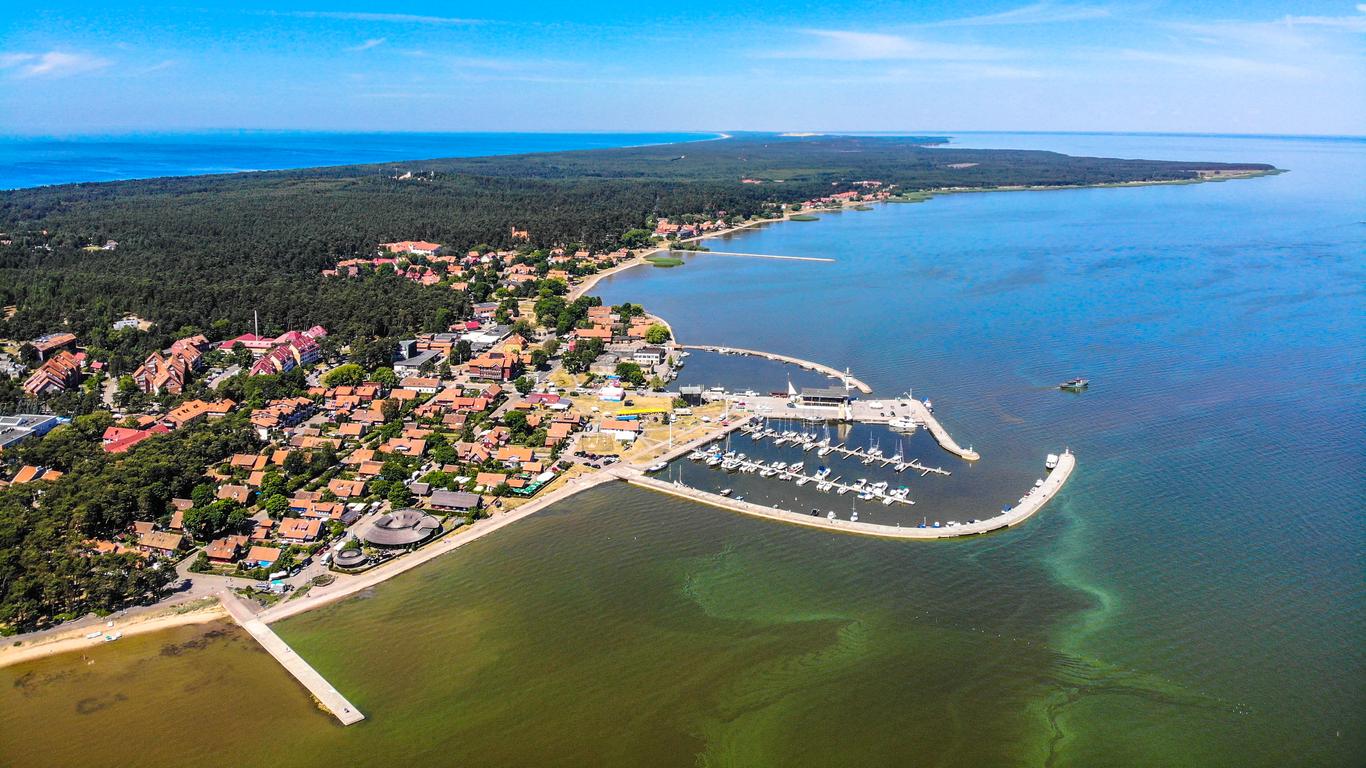
Lithuania travel guide
Lithuania Tourism | Lithuania Guide
You're Going to Love Lithuania
The southernmost country in the Baltics, Lithuania is a compact land of historical and architectural contrasts, where old pagan rituals coexist with Catholic religious events.

What to do in Lithuania
1. Visit the Hill of Crosses
What was once a symbol of disobedience against the anti-religious rule under the Soviet regime is now one of the top must-sees in Lithuania. Travelers are allowed to add their cross to the already-existing hundreds of thousands.
2. See Soviet-Era Statues at Grūtas Park
A mix of public park and open-air art gallery, Grūtas Park reminds visitors of the not so distant past of Soviet ruling through the statues of communist leaders that were once in every town of Lithuania.
3. Visit Vilnius's Top Landmark
Built on the former worshipping site of a pagan god, the neoclassical Vilnius Cathedral is the city's most famous landmark.
4. Travel Back in Time at Trakai Castle
About 40min from Vilnius, the 15th-century gothic Trakai Castle is one of the most famous tourist destinations in Lithuania.
5. Explore the Palace of the Grand Dukes of Lithuania
A must-visit in Vilnius, even for those who have little time to spare, the Palace of the Grand Dukes of Lithuania is the best place to understand the country's history over two millennia.
When to visit Lithuania
Summer is the best time to visit to enjoy the beaches by the Baltic Sea and enjoy some local festivals, such as the Sea Festival in Klaipėda.
The fall, from September to November, is chillier but the perfect time of year to attend classical music festivals and the Mama Jazz Festival in Vilnius.
How to Get to Lithuania
Entry requirements
Travelers from other Schengen Area and European Union countries can enter Lithuania with just their national identity card or passport.
Passengers from the US, Canada, Australia, and New Zealand won't need a visa for Lithuania, as long as they're not staying for more than 90 days.
Plane
Most international flights to Lithuania from other European countries will land at Vilnius Airport. Passengers from other destinations outside of Europe will have to account for at least one layover in Amsterdam or Frankfurt.
Train
There are direct trains every weekend connecting Warsaw (Poland) to Vilnius and Kaunas in Lithuania.
Car
The two easiest entry points into Lithuania by car are Poland and Latvia, also part of the European Union and the Schengen Area.
Bus
There are regular long-distance buses between Vilnius and other countries in the Baltics, Poland, and Belarus. Eurolines and Lux Express are two of the companies operating these routes.
Boat
DFDS Seaways operates regular ferry connections from Kiel (Germany) and Karlshamn (Sweden) to Klaipėda in Lithuania. A trip can take up to 20h and costs around €80 ($88).
Popular airlines serving Lithuania
Where to stay in Lithuania
Vilnius has the most options when it comes to accommodation types, from budget-friendly hostels to high-end boutique hotels. In smaller towns, options range from guesthouses to small hotels.
Where to stay in popular areas of Lithuania
Most booked hotels in Lithuania
How to Get Around Lithuania
Public Transportation
Within larger cities, like Vilnius and Kaunas, you can count on a network of local buses and trolleybuses to get around. In other towns, buses are the only public transportation available.
Trains
Lithuanian Rail operates the long-distance trains connecting the cities of Kaunas, Vilnius, and Kaunas. For other destinations, compare train with bus options to check which one is quickest and most affordable.
Bus
Lithuania is equipped with an efficient and reliable bus network that connects the major cities to all towns and villages.
Car
The major cities are connected by well-maintained modern highways. Seatbelts are mandatory for all occupants.
If you're renting a car in the winter (November to March), the car rental company must provide winter tires.
The Cost of Living in Lithuania
ATMs are easy to find in Lithuania and payments in cash are preferred. Large businesses, like chain hotels, accept debit and credit cards. Expect to pay approximately €1 ($1.10) for a one-way ticket on local transportation. A daily run to the grocery store can cost around €25 ($27). A cheap meal costs about €7 ($7.75).